Michigan Water Science Center
CURRENT CONDITIONS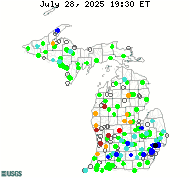
DATA CENTERReal-time data Historical data
ABOUT THE Michigan
|
Microbiology Projects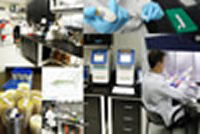
Michigan Bacteriological Research Laboratory (MI-BaRL)
The U.S. Geological Survey (USGS) Michigan Bacteriological Research Laboratory (MI-BaRL) is a newly renovated laboratory space operated by the USGS Michigan Water Science Center in Lansing, MI. The laboratory is staffed by two Ph.D. level microbiologists and five M.S. level microbiologists with a combined 70 years of experience in microbiology and water resources research. The USGS MI-BaRL provides a variety of modern analytical approaches to understand bacteriological contamination of water, and microbial ecology in diverse water environments. In Michigan, the USGS has studied beach microbiology, the occurrence of antibiotic-resistant bacteria in surface water, and the occurrence of microbial pathogens in surface water, groundwater, algae, sediment, and in drinking water supplies. Regionally and nationally, the USGS MI-BaRL has studied the relation of microbial pathogens to combined sewer overflows, land-use differences, and agricultural practices (animal feeding operations, manure management, tillage practices). Studies focus on understanding external environmental or anthropogenic influences related to the occurrence of pathogens and antibiotic-resistant bacteria. Particular focus in the laboratory is applied to maintaining appropriate quality assurance and quality control procedures, documentation, and meta-data collection for advanced methods. The MI-BaRL uses modern pathogen occurrence and quantitation methods, such as polymerase chain reaction (PCR) and quantitative PCR (qPCR), microbial source tracking (MST) techniques, and microbial community analysis methods in a variety of water resource applications. U.S. Geological Survey - Microbiology Natasha Isaacs, nisaacs@usgs.gov
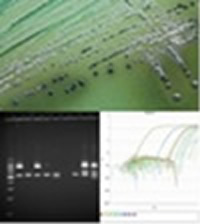
Bacterial Pathogens
The U.S. Geological Survey (USGS) Michigan Bacteriological Research Laboratory (MI-BaRL) studies the source, occurrence, and distribution of the bacterial pathogens Shiga-toxin producing E. coli (STEC), Salmonella, Shigella, Campylobacter, Enterococcus, and Staphylococcus and the relation of occurrence of pathogens with fecal indicator bacteria, land-use, season, hydrology, geology, weather factors (wind direction, wave height), and emerging chemical contaminants. We have conducted several studies that have evaluated surface water and source samples for markers specific to these bacterial pathogens. Pathogens have been studied in surface waters from several different settings including both agricultural and urban environments, rivers, inland lakes, and the Great Lakes. New methods to test for additional bacterial pathogens are continually being developed. Reports are available for the following studies: Natasha Isaacs, nisaacs@usgs.gov
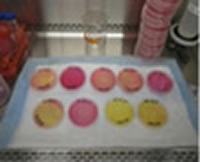
Antibiotic Resistance
The U.S. Geological Survey (USGS) Michigan Bacteriological Research Laboratory (MI-BaRL) conducts research on antibiotic-resistant bacteria and their genes. We have concentrated our studies on antibiotic-resistant bacteria of human-health concern, including vancomycin-resistant enterococci, methicillin-resistant Staphylococcus aureus (MRSA), and Klebsiella and E. coli resistant to third-generation cephalosporins. However, our methods are adaptable to a wide array of bacteria and antibiotic-resistances, from a variety of sources. We also conduct analyses identical to those performed by the National Antibiotic Resistance Monitoring System (NARMS) on bacteria isolated from the environment. We have expertise and considerable prior experience in antibiotic-resistance testing (all standard clinical approaches), probit analysis of community resistance profiles, polymerase chain reaction for antibiotic-resistance genes, plasmid isolation and analysis, and gene sequencing. Reports are available for the following studies: Carrie Givens, cgivens@usgs.gov

Microbiological Water Quality
Recreational water and industrial discharges are regulated by other federal and state agencies across the country. The U.S. Geological Survey (USGS) Michigan Bacteriological Research Laboratory (MI-BaRL) conducts studies to understand the fate and transport of fecal indicator bacteria in surface and groundwater to aid state and federal partners. A variety of standardized protocols are used to quantify fecal indicator bacteria such as Escherichia coli (E. coli), enterococci, fecal coliform bacteria, and total coliform bacteria. Concentrations of fecal indicator bacteria are analyzed for their relation to hydrology, land-use characteristics, and chemical composition and pathogen content of the sampled water. Studies have focused on developing models for total maximum daily load requirements and understanding the impacts of agricultural and storm drains. Reports are available for the following studies:

Microbial Source Tracking
It is often important to understand the source of fecal indicator bacteria, pathogens, or chemicals that impair the normal use of water. Antibiotic-resistant bacteria and their genes, specific bacterial pathogens (such as E. coli O157:H7 which is primarily associated with cattle), and host-associated bacterial genes (such as human or animal specific Bacteroides genes), can be used to evaluate the source of fecal pollution. The U.S. Geological Survey (USGS) Michigan Bacteriological Research Laboratory (MI-BaRL) uses both genetic and antibiotic-resistance methods in source tracking studies. By using DNA-based methods that detect genes from human- or animal-associated organisms in conjunction with chemical methods that detect wastewater compounds, a more accurate assessment of the source of biological and chemical contamination can be conducted. All of our studies use a multiple-lines-of-evidence approach to ascertain potential sources of pollution. Reports are available for the following studies: Carrie Givens, cgivens@usgs.gov
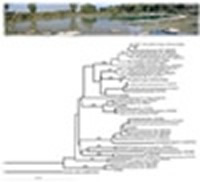
Microbial Ecology
The U.S. Geological Survey (USGS) Michigan Bacteriological Research Laboratory (MI-BaRL) conducts ecological studies on the structure and function of eubacterial and archeal communities in the environment. Studies of this type give us basic information about the composition and functionality of different microbial communities and allow us to investigate the effects that natural and anthropogenic contamination have on the microbial ecology of a system. For instance, the dynamics of bacterial community succession in or the response of a community to groundwater contamination can be investigated. Community composition analysis is done using a variety of modern molecular techniques including terminal restriction fragment length polymorphism analysis (TRFLP), denaturing gradient gel electrophoresis (DGGE), and 16S rDNA sequencing and phylogenetics. We are also beginning to adapt next generation sequencing and metagenomic approaches to community analysis. Reports are available for the following studies: Microbial Populations in Contaminant Plumes Carrie Givens, cgivens@usgs.gov
|